► We drive Land Rover Defender V8
► V8 power and performance tweaks aplenty
► Check out our new Defender V8 video
The Land Rover Defender used to be a no-nonsense, rugged sort of vehicle for no-nonsense, rugged sort of people. You know – farmers, mountain rescue teams, explorers. The sort of folk that care far more about diff-locks than digital dashboards. But, when Land Rover replaced the Defender in 2020, it changed the car into more of a go-anywhere Chelsea Tractor.
It’s much more of a status symbol than the old car ever was – and none of the Defender’s endless configurations embody that attitude better than this one. The range-topping, 518bhp supercharged 5.0-litre V8. In this age of electrification, it’s a masterclass in obnoxious overconsumption. But we must admit, it’s hard to not be bowled over by it.
Check out our new 2025 video by editor Ben Miller, who’s been living with a Land Rover Defender V8 for the past 3000 miles.
At a glance
Pros: Imperious performance, soundtrack, go-anywhere ability, usual Defender skillset, visual clout
Cons: It’s predictably thirsty, your conscience might not sleep easy at nighttime…
What’s new?
To look at, the V8 isn’t too different from the standard Defender. The only giveaways are the subtle ‘V8’ badges on the front doors and the (disappointingly undersized) quad-exit exhaust. You can also only spec it in white, satin grey or black – and every model is fitted with a set of gargantuan 22-inch alloy wheels as standard.
You can drop down to 20-inch wheels if you fancy, but you’ll pay a penalty for your sensibility. Land Rover says that, with the smaller wheels, the car’s top speed tumbles from 149mph to just 119mph. Yeah. We’d stick with the 22s as well.
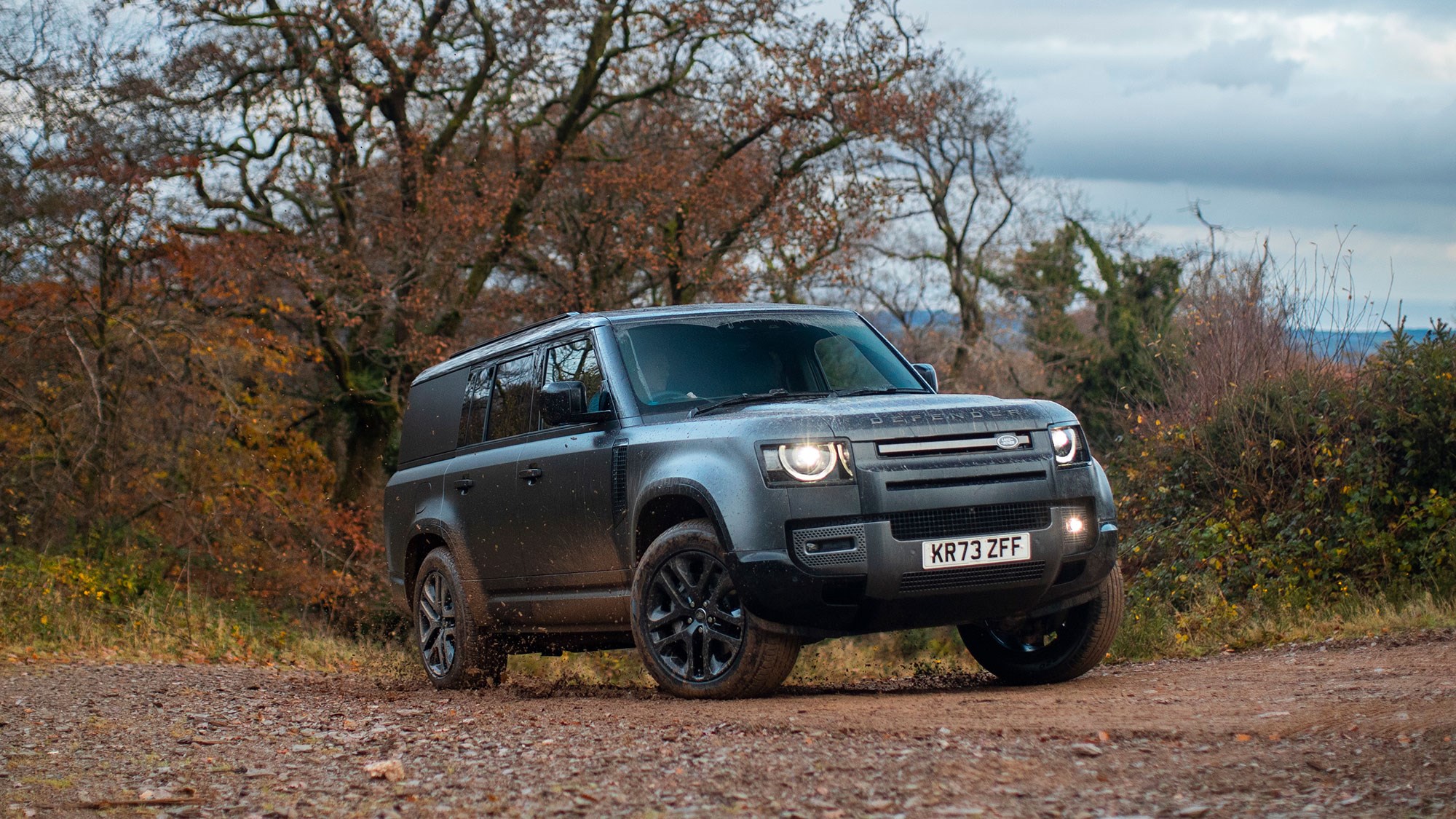
The changes continue in the cabin. V8 models benefit from an Alcantara steering wheel and some extra padding on the centre console’s rivet-ridden frame, likely to prevent you from breaking bones off it when you’re fighting the laws of physics on your favourite B-road. Oh, and it’s all black.
What are the specs?
Land Rover was cautious with the Defender V8’s looks – but, as any newly qualified relationship counsellor will tell you, it’s what’s under the skin that counts. And this Defender has it where it counts. Under the bonnet is a detuned version of the supercharged 5.0-litre V8 engine fitted to the old Jaguar F-Type SVR, churning out up 518bhp and 461lb ft of torque. That’s a lot of poke.
Enough poke, in fact, to shove the short-wheelbase 90 model from 0–62mph in a hot-hatchback-troubling 5.2 seconds. The larger, heavier 110 and 130 variants aren’t that far behind, either – they can complete the same sprint in 5.4 and 5.7 seconds respectively. That’s Hyundai i30 N territory, in a car that can haul you and all your mates across the Sahara in air conditioned comfort. It’s staggering.
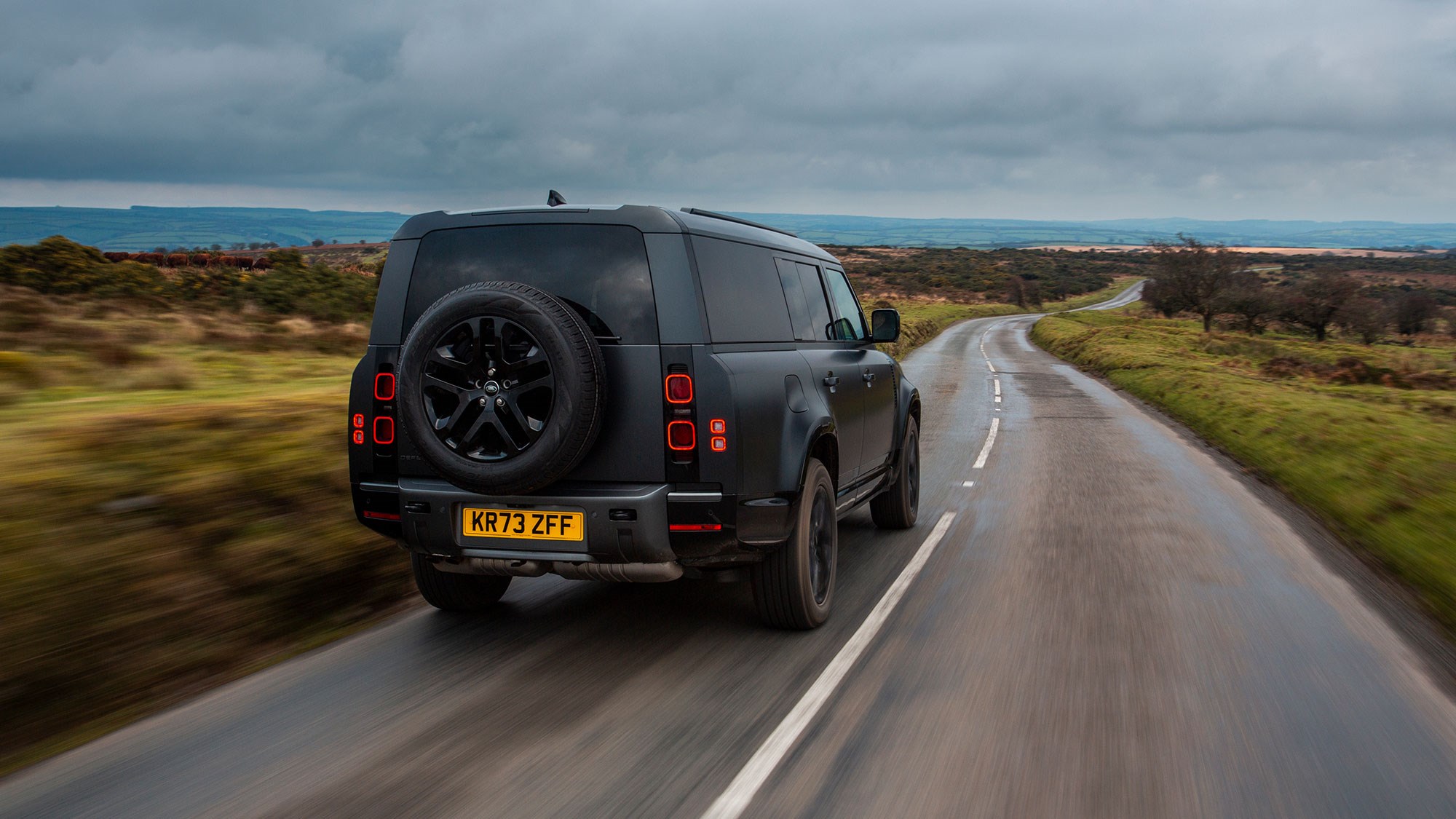
There’s more to the Defender V8 than just straight-line speed, though. Land Rover also fettled the car’s chassis, tweaking its air suspension, resetting its spring rates and upgrading the rear active differential with a yaw controller to reliably transmit the V8’s monstrous power to the road when you’re cornering hard. You also get fatter anti-roll bars and bigger 20-inch brakes. Oh yeah, and a new ‘Dynamic’ drive mode that makes the chassis a little stiffer and the engine more eager.
How does it drive?
Very well, considering its size and weight. You need to recalibrate your driving style to get the best from it, though. Treat it like sports saloon and you’ll soon find yourself charting a course into the undergrowth. However, we’ve spent a lot of time razzing the Defender V8 around the Lake District’s toughest mountain roads – and we think we’ve cracked the tactic.
First, approach the corner at a controlled, sensible sort of speed. Then, hurl the wheel into the bend and allow the suspension to lean and settle. Finally, sight your exit, light the afterburners and let the V8’s mountain of torque throw you at the next turn. We reckon the V8 could easily keep pace with a Golf R or an AMG A 35 using this method – and the second you hit an open stretch of road, you’d waltz past them both.
The Defender V8’s steering system is tremendously accurate, too. Land Rover has nailed the assistance – it’s light enough to not feel cumbersome around town, but the weight builds progressively as you pile on the speed. That means it doesn’t feel twitchy or nervous when you’re driving quickly.
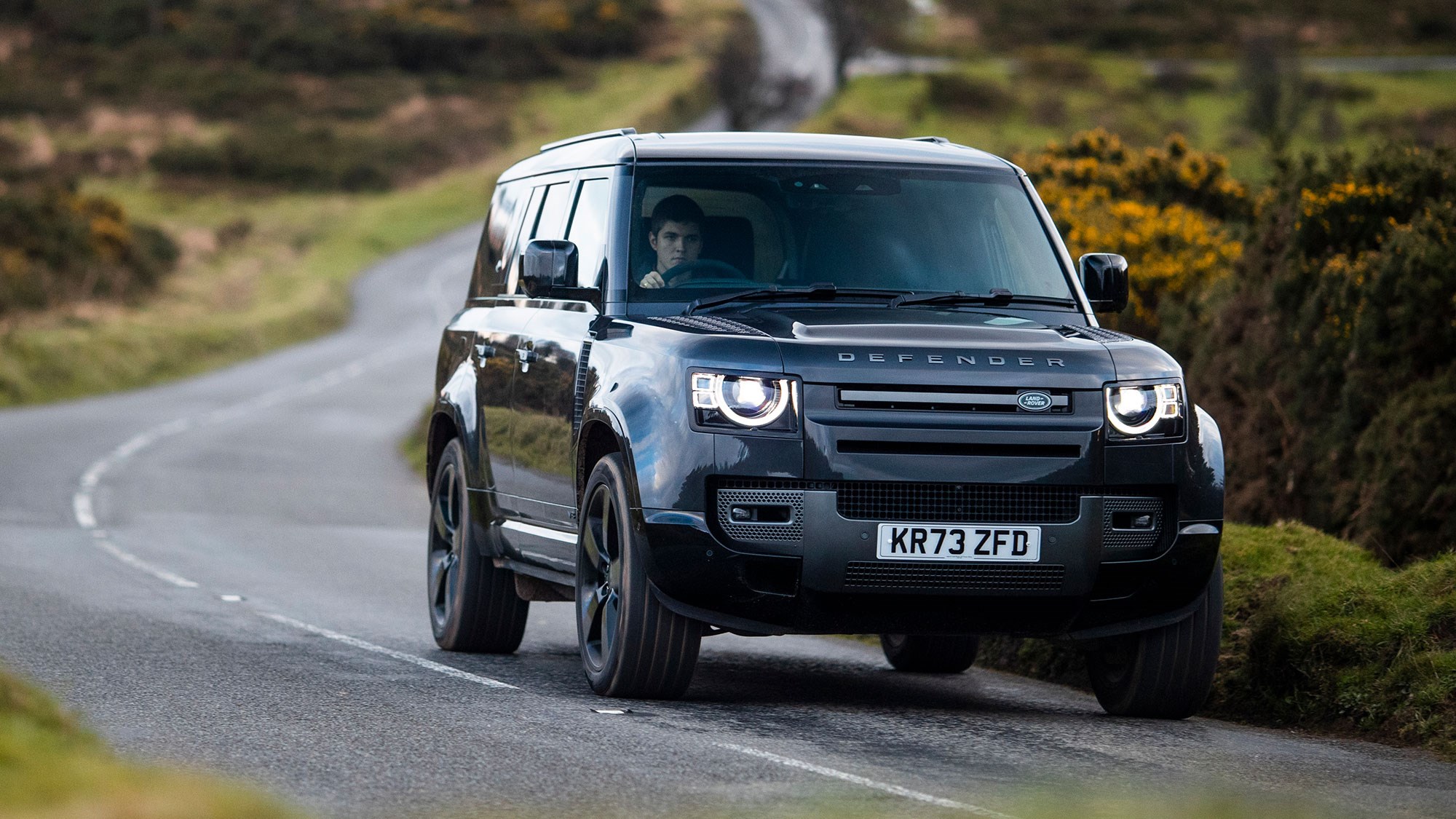
Even more surprising is the sheer amount of grip available. We weren’t brave enough to really push the limits of the chassis’ stickiness – especially not with all 1,167 feet of Honister Pass to roll down if we got it wrong. But even at 70% commitment, we could tell the suspension still had a lot give.
What’s even more impressive is how well the Defender V8 controls its considerable bulk, even with its lack of the 48V active body control systems you’ll find in its Volkswagen Group rivals. Obviously, there’s still some body roll, but far less than there should be for something this tall and heavy. Comfortingly, the brakes are ace, too.
Despite the furious performance under your right foot, the Defender V8’s cabin is very composed. It isn’t an SVR product, so you don’t get the same phlegmy thunderclap theatrics as a Range Rover Sport SVR. When you put your foot down, there’s little more than a cough from exhaust before the horizon slams into the windscreen.
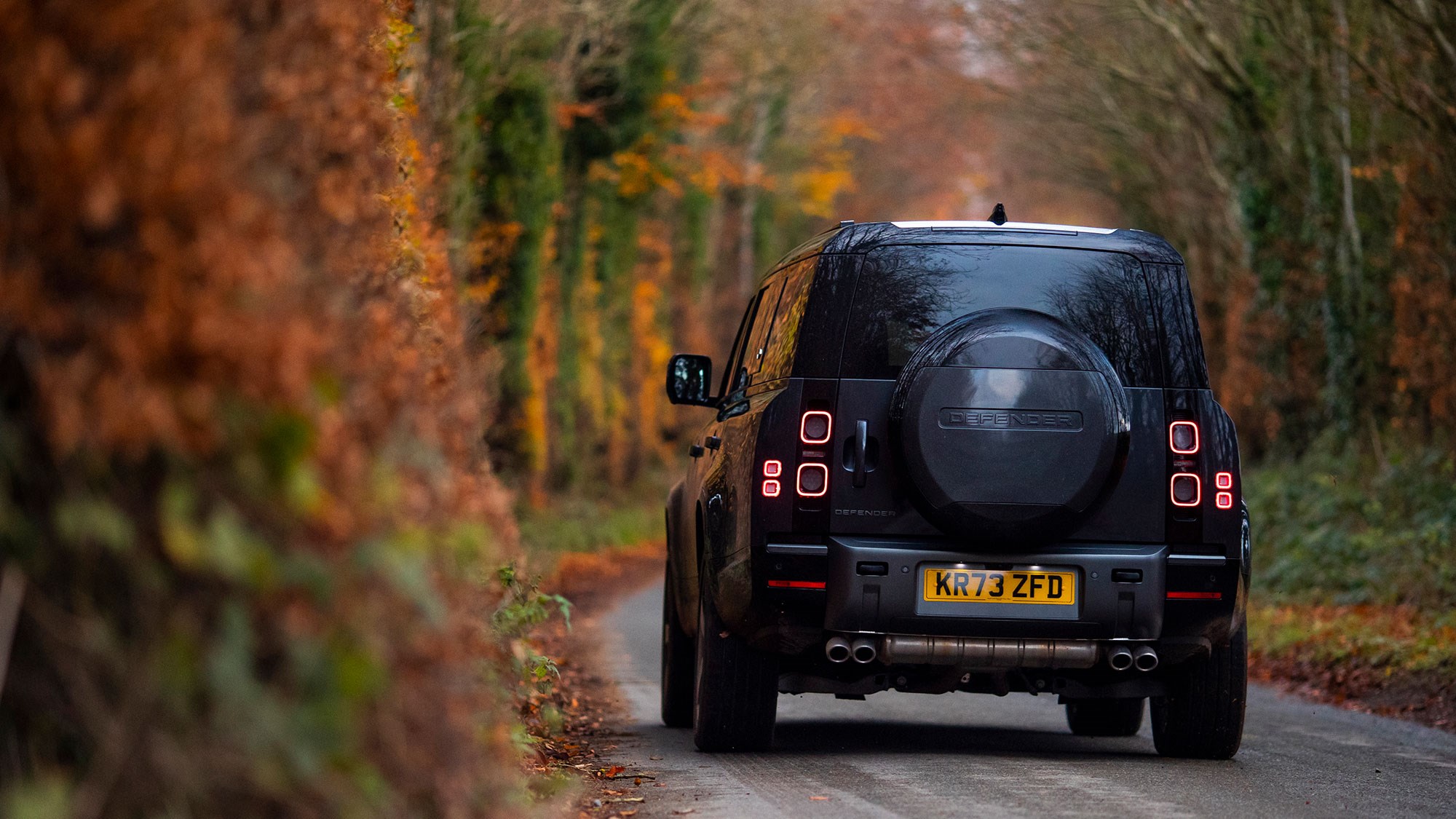
Why? Well, the age of electrification has dawned – so Land Rover has had to choke its V8 engine with petrol particulate filters and clever catalytic converters to make it conform to the latest emissions standards. That way, it can remain in service until 2027.
But these emissions nannies muffle the sound. It’s still good, but it’s just at 50% volume. So, to compensate, Land Rover has piped some gentle digital replication of the engine noise into the cabin and figured out some trick ways to amplify the whine of the supercharger. That dinky exhaust is also designed not to affect the Defender’s offroad prowess by compromising the departure angle.
What’s it like off-road?
Great. We’ve conducted extensive scientific research (we weren’t just pratting about, honest) at Land Rover’s off-road facility in Eastnor. We pitted the Defender V8 against rolling fields, deep streams, steep inclines and disgruntled campers – and the flagship felt at no disadvantage to any other Defender. Even on the standard-fit Continental CrossContact tyres (with their normal-looking tread blocks), the Defender never struggled on slick mud or cross-slip slopes.
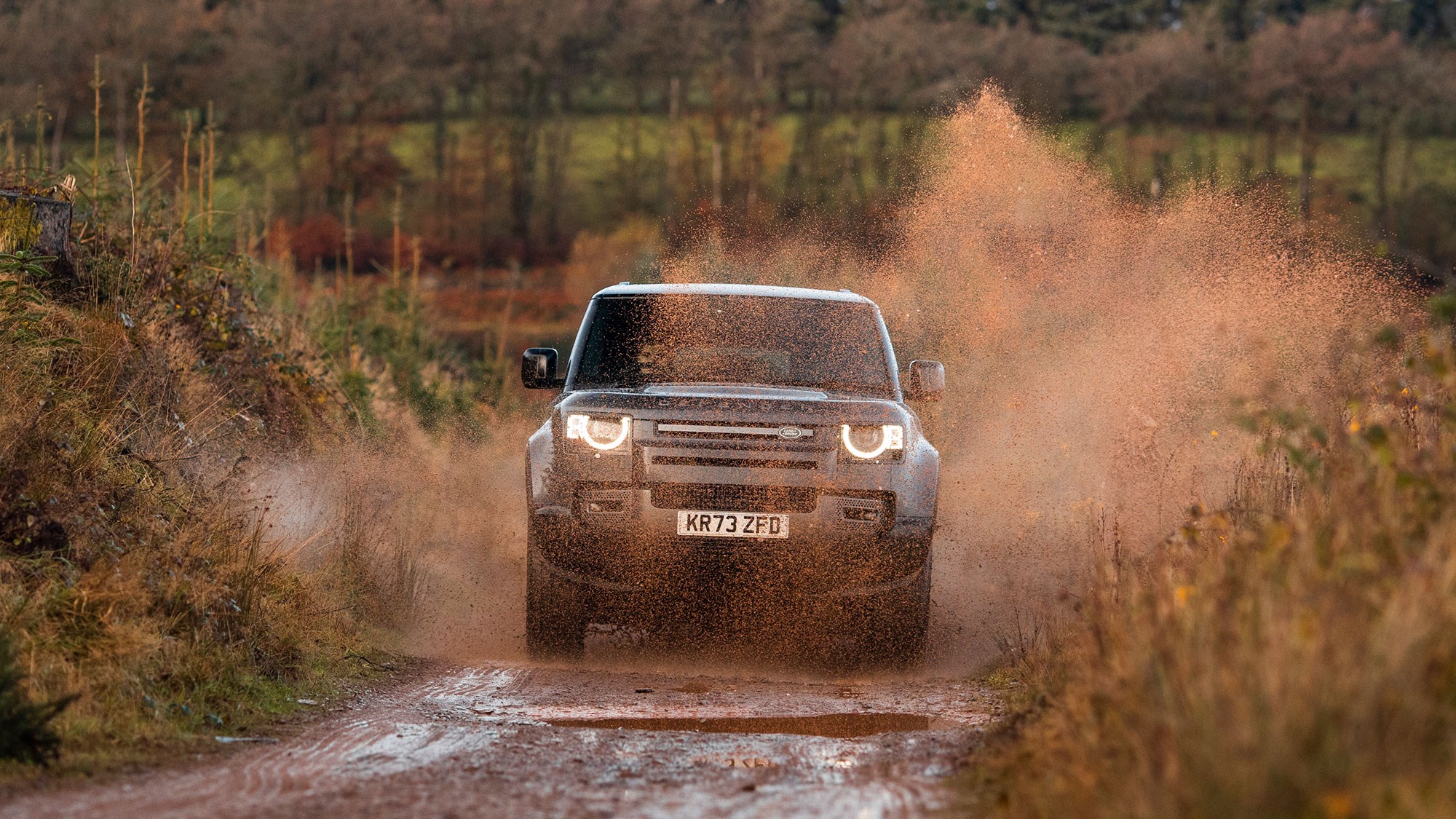
We also did some off-roading at speed, rally-style in a V8 90. With Dynamic mode engaged, the Defender could tackle corners at full noise like a Group B racer and come back hungry for more. You feel the differentials doing their work here most, the steering wheel buzzing with feedback as power is shuffled to the wheel with the most grip. There are moments where Dynamic mode allows a touch of oversteer, too – but even on the ragged edge, it’s so satisfyingly controllable.
What about the interior?
Most recently, we spent a week with the largest Defender V8 130. For the driver, it’s the same as the middling Defender 110. The only appreciable difference is that more of the door mirrors are occupied by the car’s bodywork. For passengers, though, it’s a completely different kettle of fish.
It’s vast, with enough space to seat seven adult passengers in sumptuous comfort. Even those in the third row get heated seats and their own sunroof. That’s the level of luxury we’re talking, here. And, because the Defender’s suspension system is so well-judged, you can cover long stints on the motorway with an entire rowing team on board and not hear a single complaint.
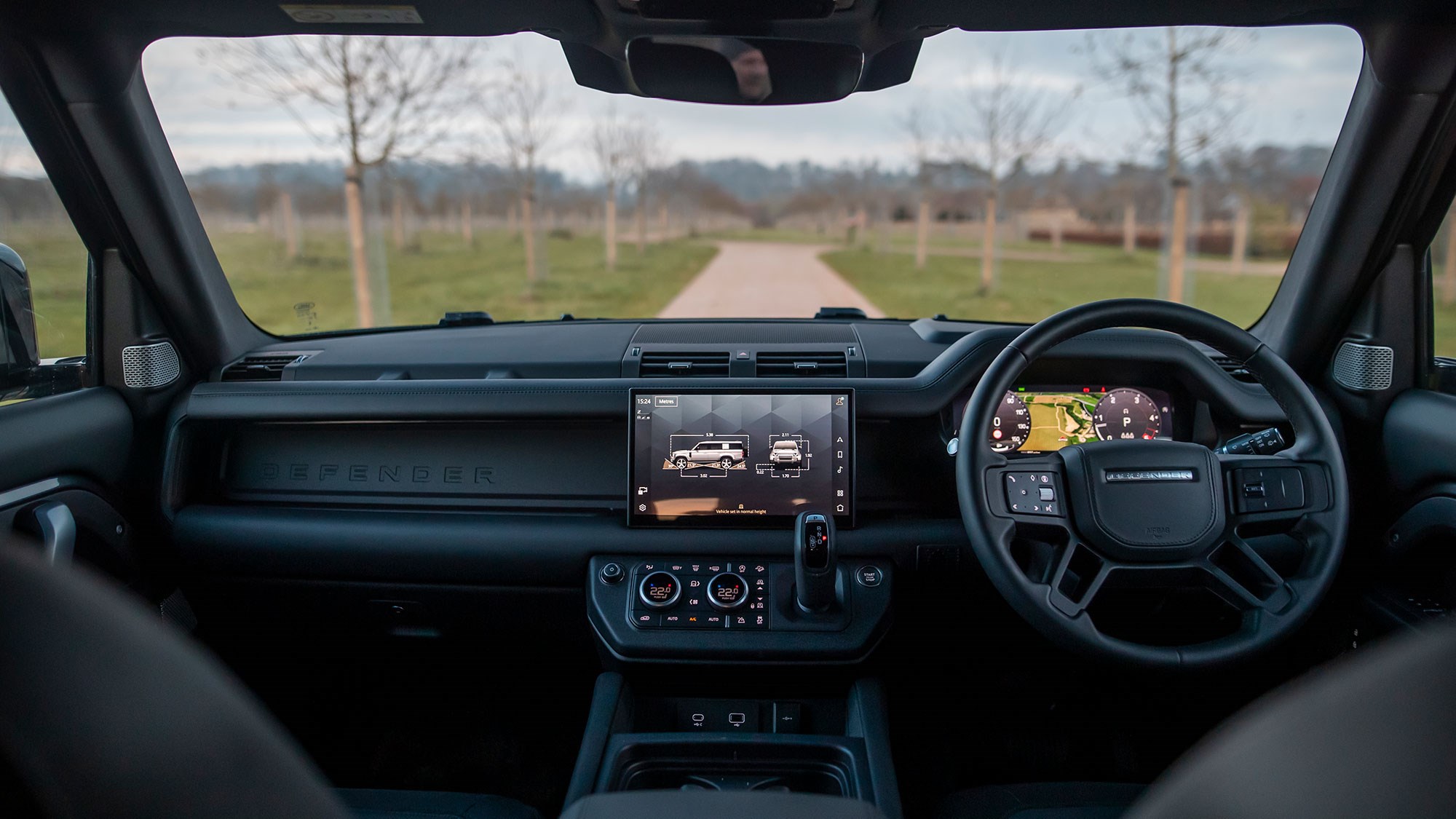
You can’t have it all, though – and in the case of the Defender V8 130, you pay a penalty in boot space. Land Rover says there’s 389 litres available behind the third row, but the space is very shallow, which means you need to precariously pile your luggage up to the roof and then quickly slam the rear door shut before you’re crushed by an avalanche of cases. It’s not very user friendly.
If you make your mates on the rearmost seats get the bus, you can unlock up to 1232 litres of boot capacity. However, with the third row tumbled, there’s a very unhelpful lip in the boot, which makes it difficult to load cumbersome items into the space. The third row is quite difficult to access, too. You need to flip the second row of seats forwards – and the aperture they leave is quite narrow.
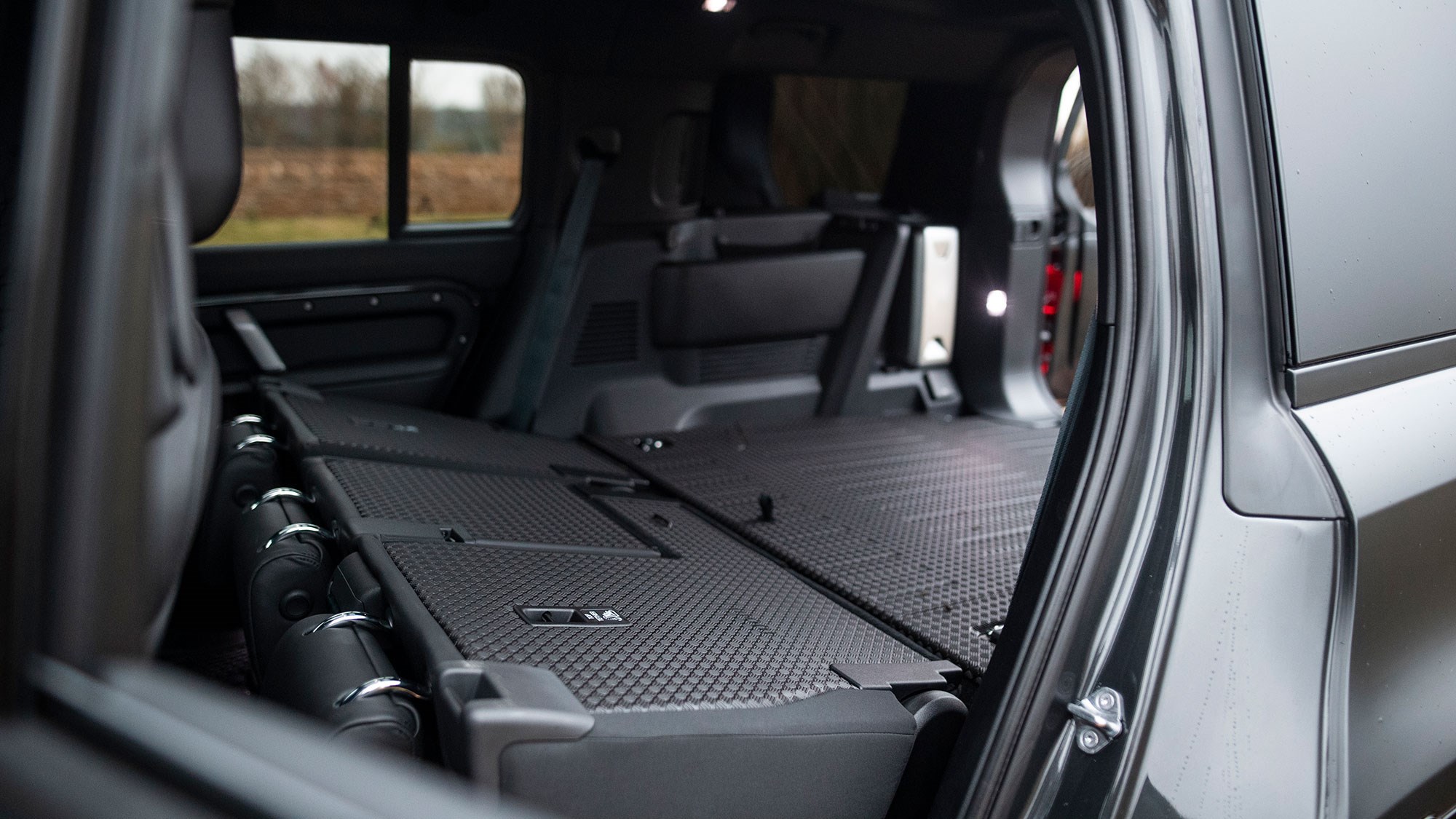
Land Rover has deployed some intelligent ergonomic thinking, however. We were flabbergasted by the car’s digital rear view mirror. By flipping what would be the anti-glare tab on a conventional rear-view mirror, it becomes a screen connected to a camera mounted on a shark fin on the roof. That means you don’t need to worry about your passengers obstructing your view out of the rear window.
Land Rover Defender V8: verdict
The Defender V8 is a difficult car to recommend objectively. It couldn’t be any less in tune with the times if it ran on whale blubber – and it closest rivals offer better performance in their respective specialisations. So, the Porsche Cayenne Turbo S E-Hybrid has it licked dynamically and, with its monocoque chassis, it can’t quite get as far into the sticks as the Mercedes-AMG G63.
But the Defender V8 is a very entertaining, very charismatic car that’s sure to make you giggle like an overly caffeinated school child every time you drive it. It’s expensive to buy, inconvenient around town and it swills fuel faster than a burning oil rig – but, as a tool for making you feel special every day, there are few cars on the market capable of matching it.
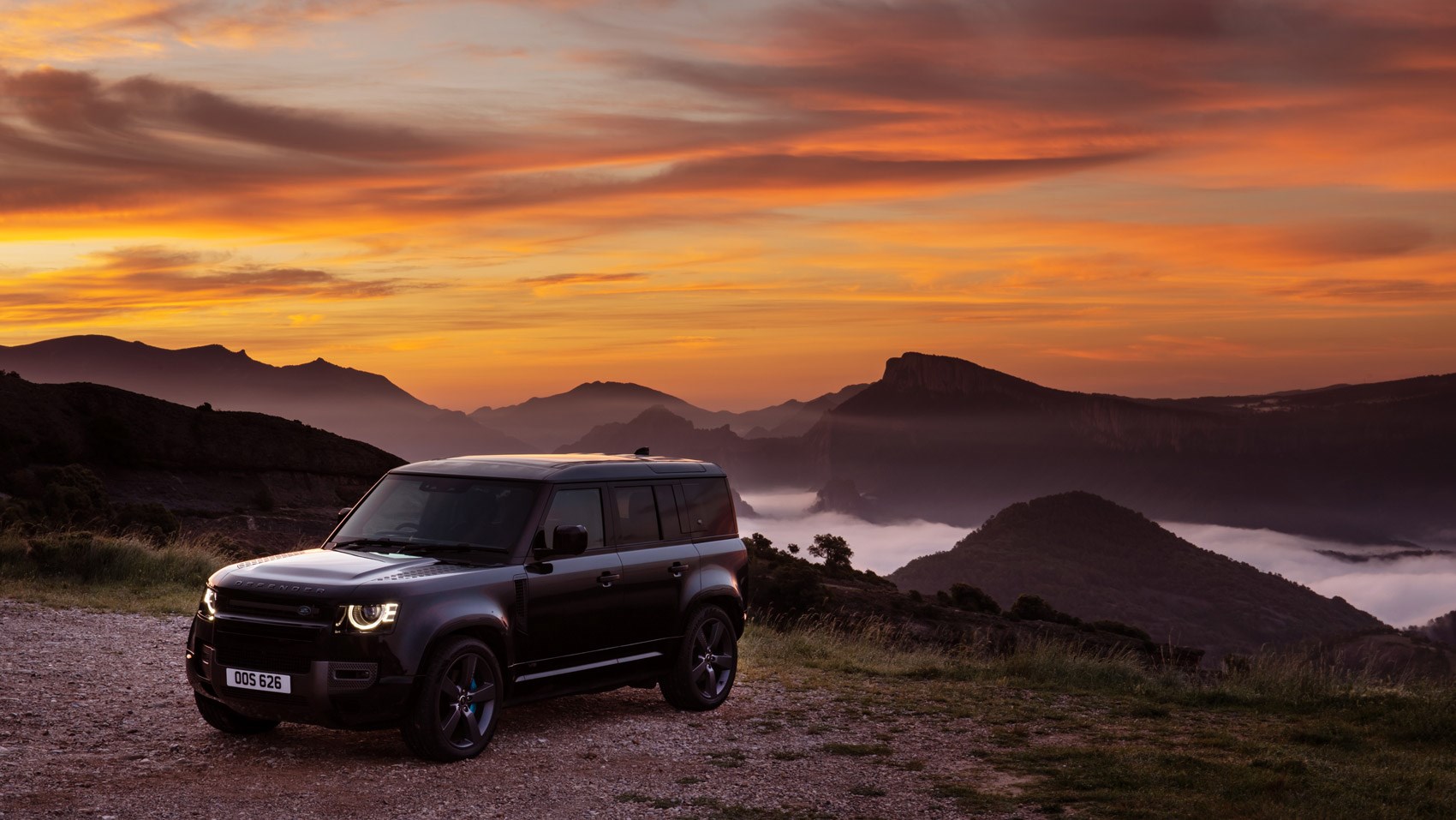
Specs are for a Defender 110 V8
Read more Land Rover reviews here